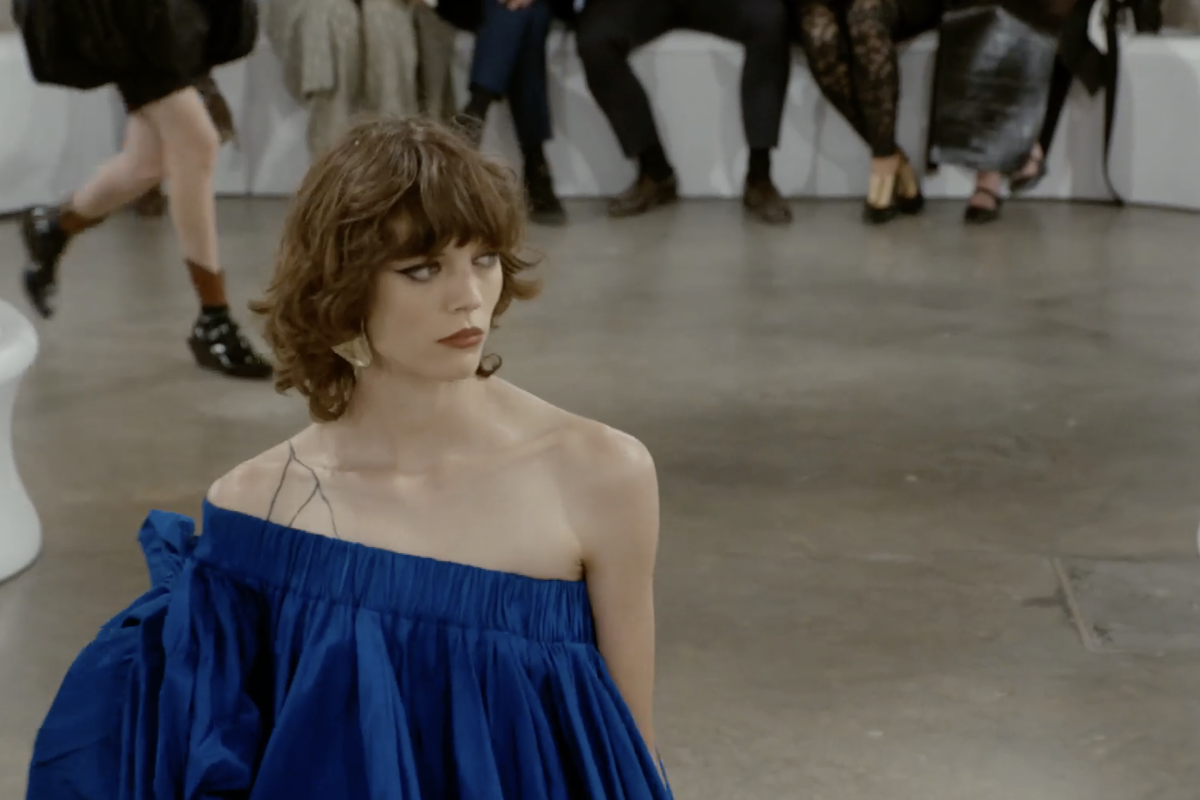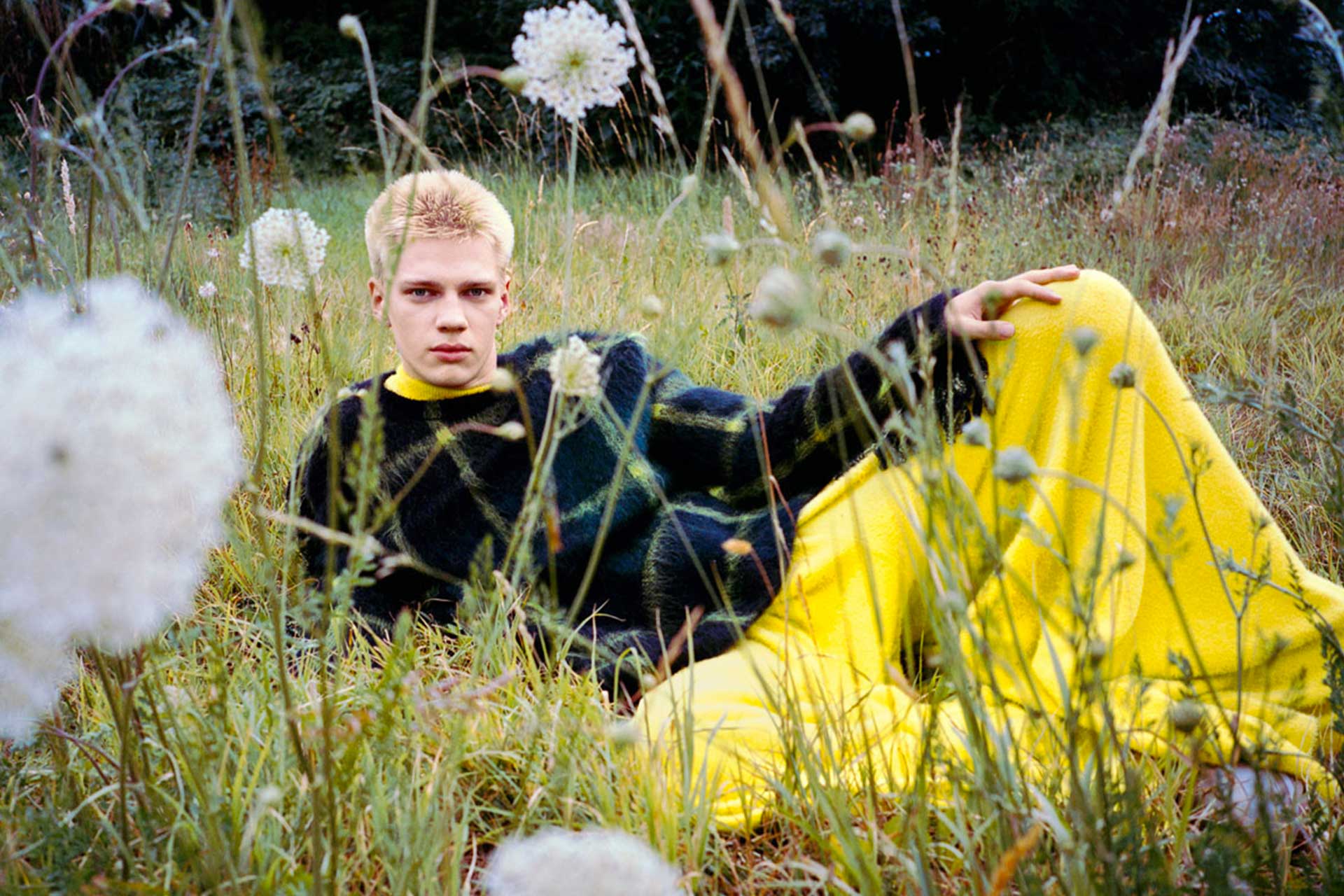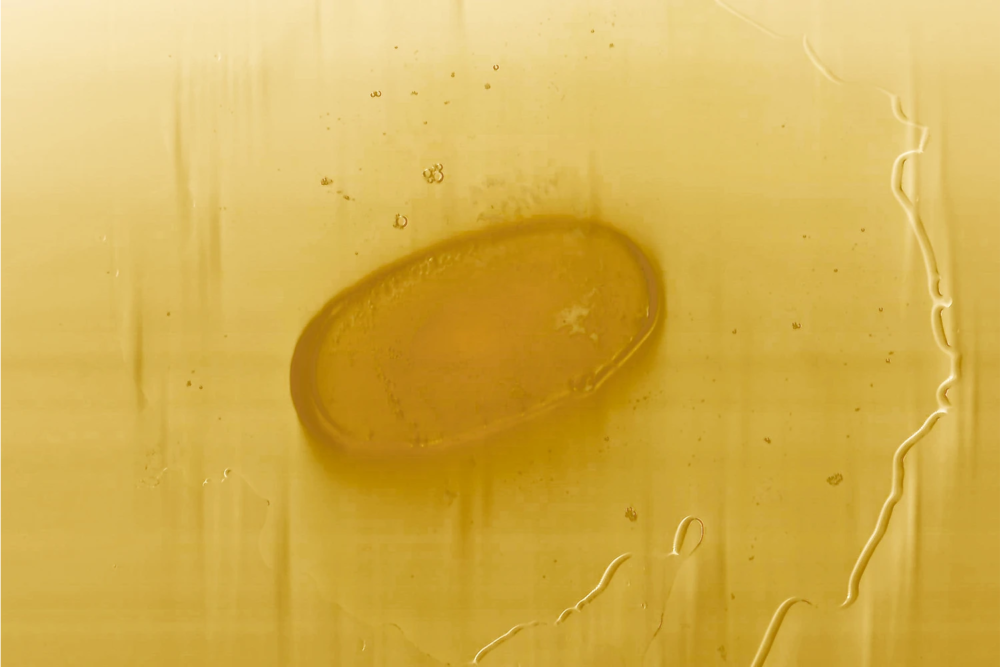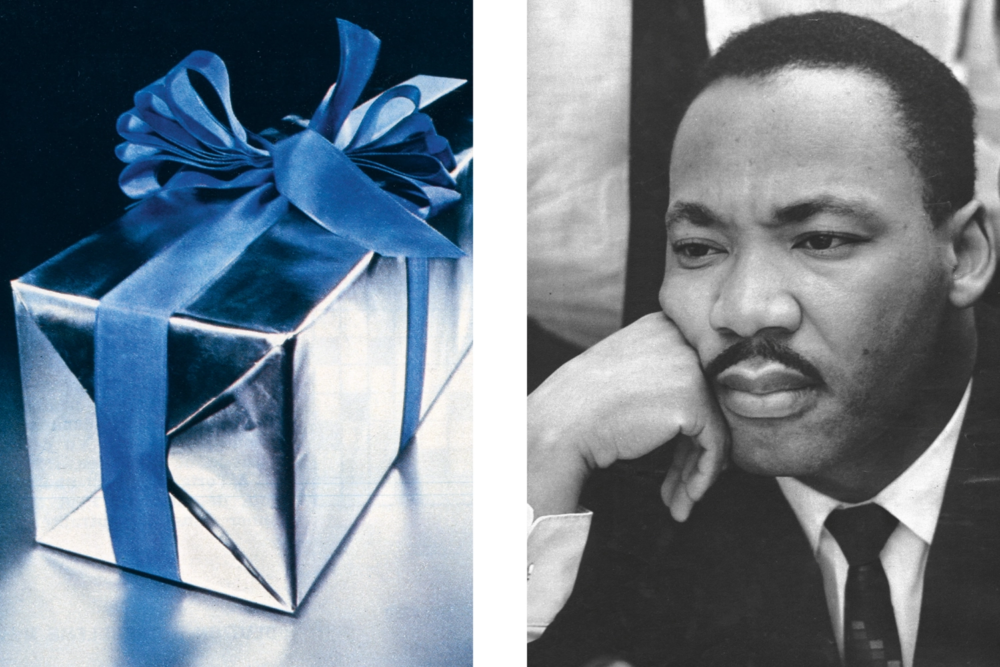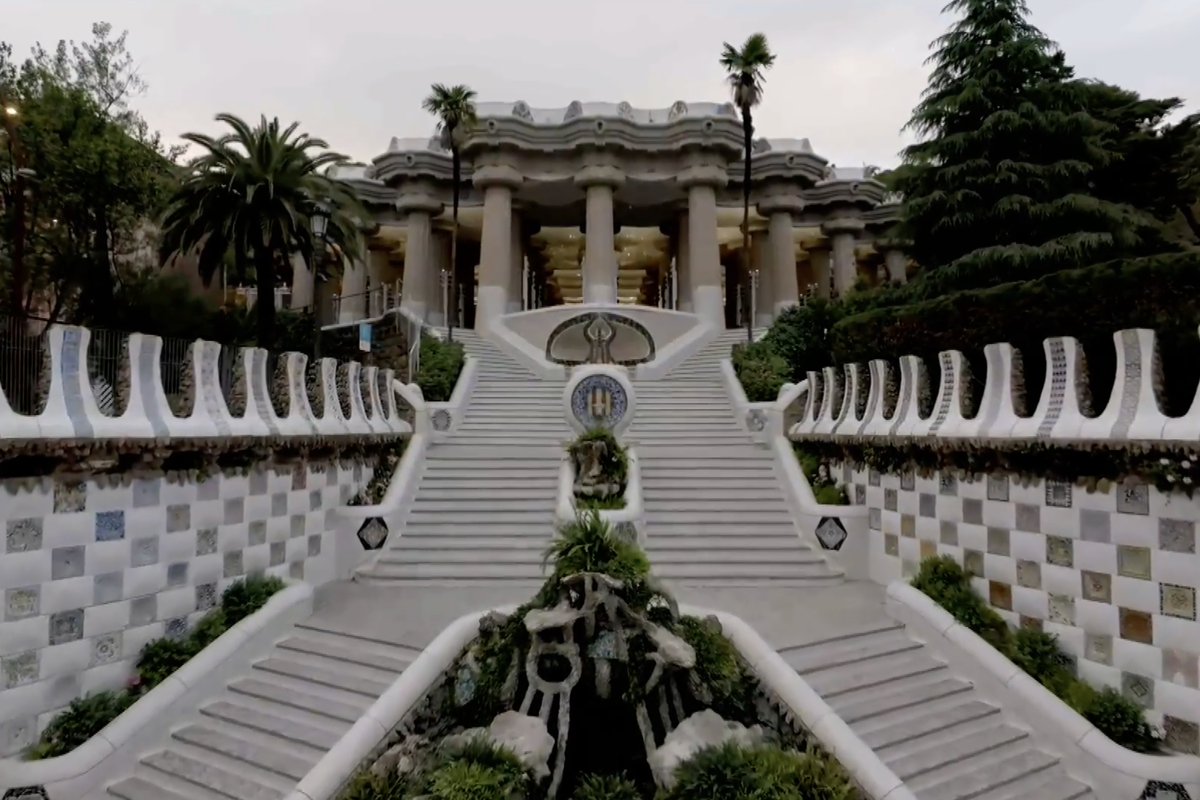
Louis Vuitton Cruise 2025: Ghesquière’s archaeology of the future at Parc Güell in Barcelona
Gaudí’s Art Nouveau according to Ghesquière, the Louis Vuitton Cruise 2025 show takes place in Barcelona – historical architecture and mecha design are the backdrop of a romantic and business operation
“Can we awaken the clothes of yesterday and infuse them with the spirit of today?”: Nicolas Ghesquière’s archaeology of the future at Parc Güell in Barcelona
“Vuitton is a brand that can travel through space and time.” In November 2013, just after his appointment as Louis Vuitton’s creative director, Nicolas Ghesquière introduced himself to Monsieur Arnault’s court – CEO of the LVMH conglomerate, where the first two letters are an acronym for the same Maison – in the guise of a time traveler, a guide through space-time, an author of both nostalgic and futuristic outfits. Ascribable to the same lineage as Versace, Gautier, and Mugler, Nicolas Ghesquière has always been a revivalist, a proponent of that “aesthetic of mixing” that tends to seamlessly blend Indian fabrics and manga, streetwear and historical archetypes, in a general short circuit that often confuses but more often enchants. A nostalgic, Ghesquière, with the need to rework that whirlwind of fantasies into the suggestions of clothes – by his own admission, fashion has been an obsession since adolescence. Among the many quotes about him, one, in the form of a question, particularly testifies to his spirit as a time traveler: “Can we awaken the clothes of yesterday and infuse them with the spirit of today?”
The solution is what we might call an archaeology of the future, a mixing between the here and now, and the there and then, between historical architecture and mecha design. The two worlds, that of history, with its conservative morphologies, and that of mechanics, with its high-definition graphics, come together in Ghesquière’s aesthetic, where the glue is provided by the choice of location. Always different settings – last year it was the gardens of Isola Bella on Lake Maggiore – to do justice to the sonatas of time by master Ghesquière. As explained by fashion critic Fabriano Fabbri, in the section dedicated to the designer within the volume Contemporary Fashion (2021), “for those who intone the sonata of time, the function of an adequate scenic atmosphere, of a suitable theatrical backdrop to frame the designer’s subjects of inspiration, is decisive, if not fundamental.” The theatrical backdrop of the Resort 2025 show is no exception: Parc Güell in Barcelona, suitable for several reasons.
The collection: roughness and contradictions of form – inspirations beyond Gaudí
Under the mosaic-covered roof of the Hypostyle Hall at Parc Güell, amid surrealist devices, esoteric symbols, and fantastic animals, Nicolas Ghesquière did what he does best: blend distant registers of expression and flatten them into graphic motifs. In the cultural packaging created for the Resort 2025 show were the painters Velázquez, Goya, and Zurbarán, the avant-garde filmography of Luis Buñuel, the psychological thriller As Bestas (2022) by Rodrigo Sorogoyen, and the America’s Cup in Barcelona, of which Louis Vuitton is the main sponsor – these are the names cited by Ghesquière in the traditional pre-show speech. “I wanted to respect the place we are in. I love that this country evokes concreteness and rigor, and at the same time speaks of freedom, youth, and a certain extravagance,” he finally added.
The contradiction of Ghesquière, a designer known for his precise and asymmetrical geometries, with a neominimalist treatment and sci-fi rigor, who chooses the work of a fluid-form architect like Gaudí for inspiration, did not go unnoticed. There were questions about how such a contradiction could be resolved, but in the end, it was only half-resolved. While it is evident that Gaudí’s part, although not mentioned in the pre-show speech, is that of freedom, youth, and extravagance, looking at the collection, Ghesquière does not seem to have strayed from his usual rigidity of form. As a magnet for citation, this rigidity was instead sought in other authors – Velázquez, Goya, Zurbarán, and the others mentioned. In short, Gaudí inspires the collection only insofar as it is suggested by Spanish figures of all kinds, according to that eclectic line that constitutes the Ghesquière-Gaudí connection axis.
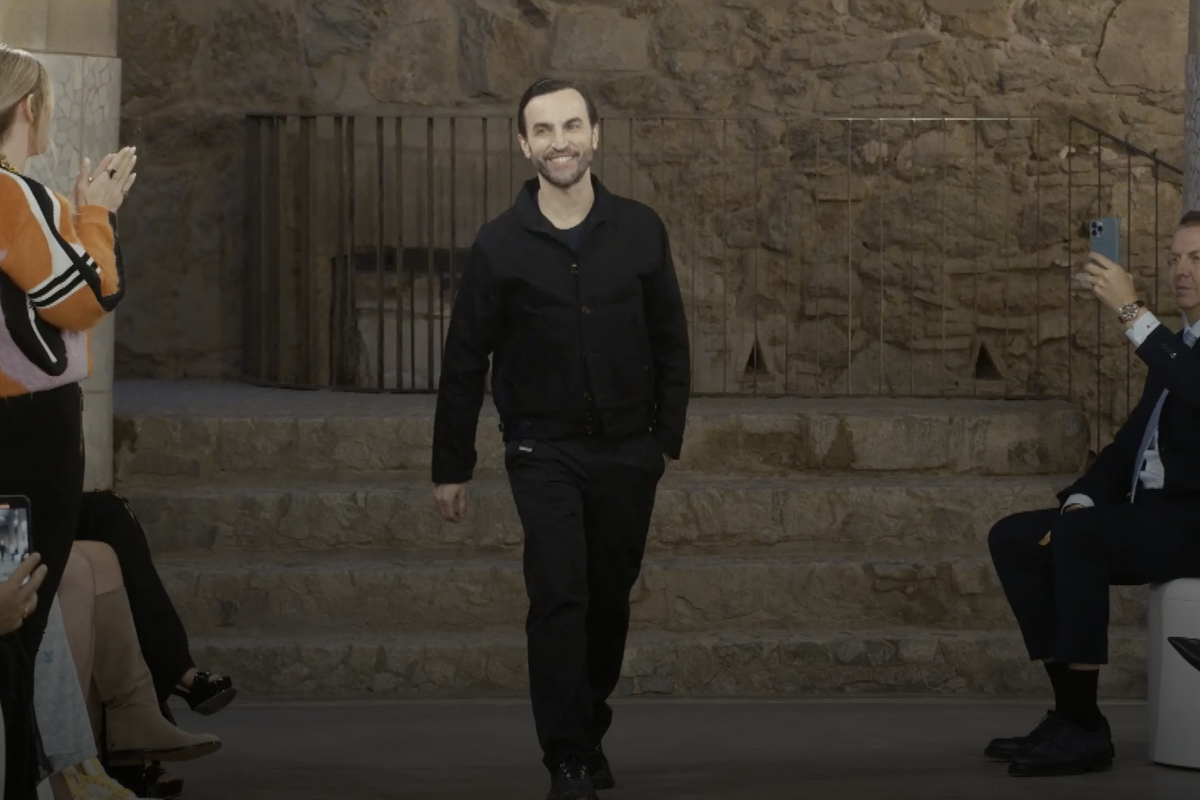
The collection: a retro-Spanish cargo
The first looks of the Resort 2025 line follow in the footsteps of the best authorial tradition, with neutral colors, slight hourglass structures, and tight-fitting fabric sheaths due to Ghesquière’s tendency to never stray too far from the body. On this smooth, linear base, the designer placed roughness through ornamental appearances and retro touches. South American cowboy straw hats, mirrored racing glasses, padded eighties collars and shoulders – those of Ghesquière’s youth – material exuberances – like the balloon skirts and sleeves of some dresses – and chiaroscuro drapes are the tools of such roughness of form. Added to this, halfway through the show, were equestrian touches – particularly in the jodhpur-style pants and riding boots – polka dots, ruffles, and other flamenco dancer elements – one of the many tourist clichés in Spain. In the fashion field, the only Spanish designer referenced in the collection is Paco Rabanne, whom Ghesquière honored with a semi-deconstructed white lace skirt reconstructed with metal hooks. The layering of inspirations thickens further towards the end, with mosaic prints – perhaps the only true concession to Gaudí’s art, besides the choice of set in the mentioned mixing of arts – saturated paints, ultramarine silks, and emeralds, in a markedly retro-Spanish cargo.
Between Gaudí’s Art Nouveau and Ghesquière’s rough mixing aesthetic
Declared a UNESCO World Heritage Site in 1984, Parc Güell was supposed to be an English-style park-garden – this was the request of the Catalan textile entrepreneur Eusebi Güell to the architect Antoni Gaudí. Within it, the construction of a residential area was planned to host the houses – about sixty – of the most illustrious city families, including the Güell family. The description of the original project requires the conditional because only two houses were built, and the project never really took off. The reasons lie in the lack of necessary funds and the Sagrada Familia project, which ended up absorbing all of Gaudí’s commitments, leaving out the rest. In 1922, the park, which retained the name of the Güell family, was purchased by the city of Barcelona, which made it a place of public interest (and fashion).
Although never completed, Parc Güell remains an expression of Gaudí’s modernist style, where an ancient technique like mosaic and curvilinear tracks reminiscent of a spacecraft, when space was not yet talked about, have reason to coexist. The surfaces of what was built were largely made using the trencadís technique, a decorative practice that uses fragments of colored ceramics and glass as a mosaic. A pre-recycling art, motivated by the use of scrap materials, on which Gaudí imprinted forms of fantastic animals, surrealist natures, and models of ancient architecture. Artificial arches, stalactite-shaped pillars, mushroom-shaped roofs, columns – one hundred to be exact – in Doric style, supporting a ceiling studded with mythological symbols. The point of tangency between Gaudí’s Art Nouveau and Ghesquière’s mixing aesthetic lies in a certain taste for the eclectic, in an ability to collide, one in architecture, the other in dressing, the codes of the archè with return-to-the-future parables. And then there’s that story that it was fashion that put Gaudí on Eusebi Güell’s path. It seems that, observing the window of a glove store designed by Gaudí, Güell was so impressed that he chose him as the author of his residential project, despite not knowing him.
The Louis Vuitton–Barcelona axis in history
The connections between the show’s location and Maison Louis Vuitton do not run on the sole Ghesquière–Gaudí track. No later than 1920, George Vuitton, one of the founding fathers of the Maison and the creator of the LV logo, had his family residence built in Asnières-sur-Seine according to the principles of Catalan modernism: it is known that he described Gaudí as an architect “modern for the moderns.” At the 1929 Barcelona International Exposition, the bond between the Catalan city and the fashion house, then only a producer of trunks and suitcases, was further strengthened with the special award given to Gaston-Louis Vuitton, son of George Vuitton. Already at that time, the items branded with the LV acronym were considered luxury goods, appreciated for their modernism, in harmony with Spanish art.
This was followed in 1987 by the opening of the first Louis Vuitton boutique in Barcelona, the first step in an expansion that materialized in 2003, with the construction of a nearly five-hundred-square-meter store on Passeig de Gràcia, today synonymous with France in Catalan territory. The business of Cruise shows, beyond fashion A practical reading, motivated by the subtext of business. Traditionally, Cruise and Resort collections, designed for the wealthiest clients accustomed to traveling year-round to exotic locations, are an opportunity for fashion houses to approach new markets, or renew – as in this case – a narrative rooted in the past. Since 2022, an additional expansion by the Louis Vuitton brand in Spain has been underway, soon to be marked by the construction of a new eight-thousand-square-meter factory on the outskirts of Barcelona, replacing the previous one of only three thousand. In this brand-strengthening operation – an operation far from being merely aesthetic, but one of business – selling the dream is essential, where the dream is the clothes, the creator is Nicolas Ghesquière, and the scenery is Parc Güell.
